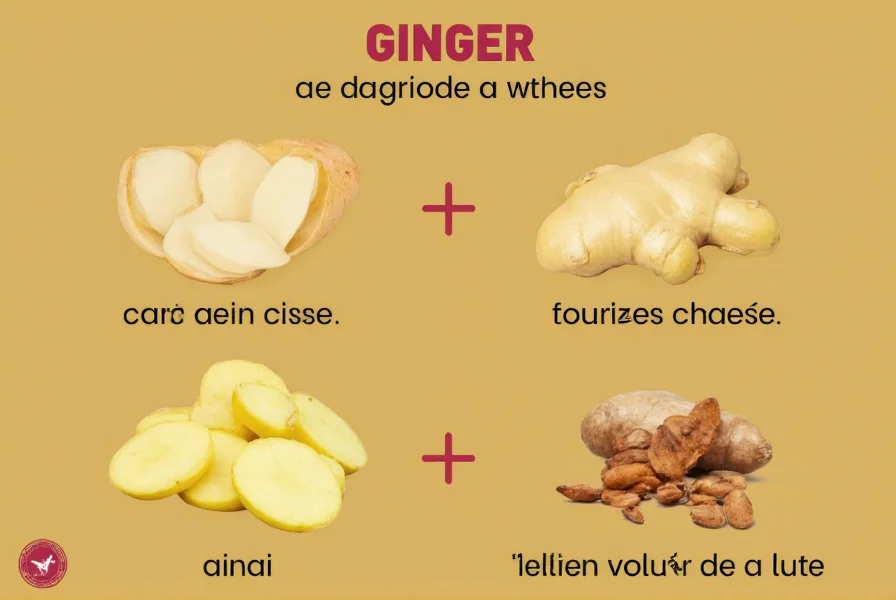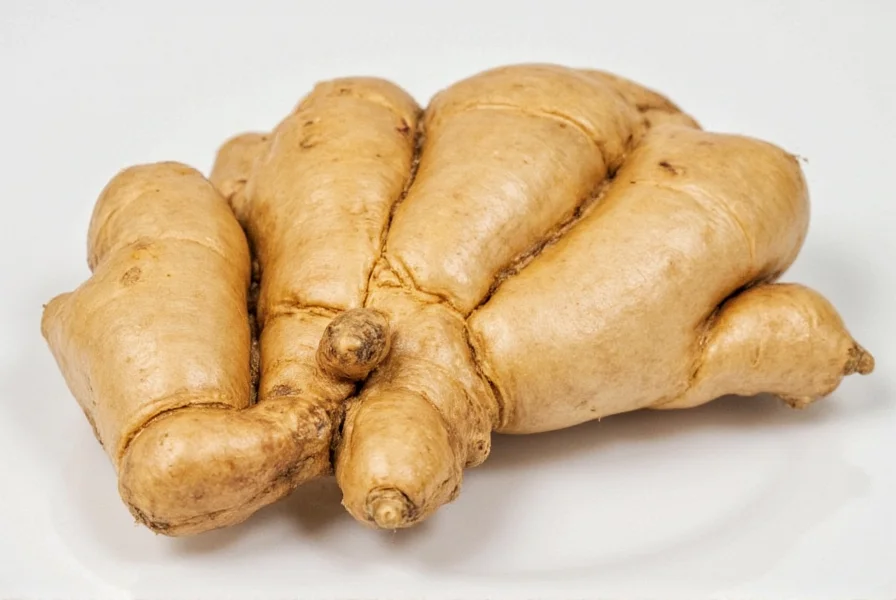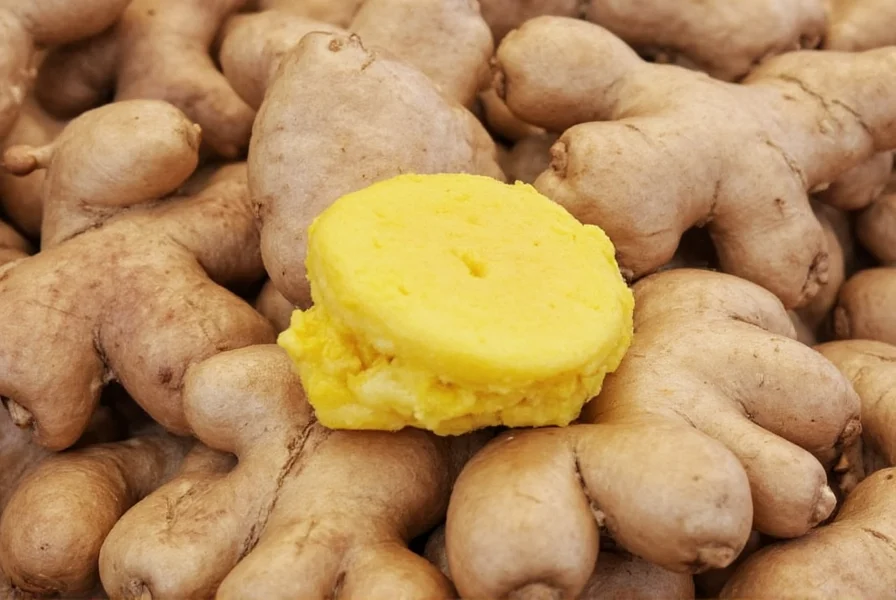When learning culinary terms in a new language, precise translations matter. The English word 'ginger' translates directly to jengibre in Spanish. This term applies to both the fresh rhizome and ground spice used throughout Latin America, Spain, and other Spanish-speaking regions.
Understanding 'Jengibre' in Context
Unlike some food terms that vary significantly by region, 'jengibre' maintains remarkable consistency across the Spanish-speaking world. Whether you're ordering tea in Madrid or asking for ingredients in Mexico City, this term will be universally understood.
The word 'jengibre' entered Spanish from the Sanskrit 'śṛṅgavera,' traveling through Greek and Latin before becoming standardized in Spanish. This linguistic journey explains why similar terms exist in many European languages (ginger in English, gingembre in French, zenzero in Italian).
Pronunciation Guide for Spanish Learners
Proper pronunciation is essential for clear communication. Here's how to say 'jengibre' correctly:
| Syllable | Pronunciation | English Approximation |
|---|---|---|
| jen | hen | like 'hen' but with softer 'h' |
| gi | HEE | stressed syllable, like 'he' |
| bre | bray | like 'bray' of a donkey |
The 'j' in Spanish makes a sound similar to the 'h' in English, but with more throat constriction. The stress falls on the second syllable, distinguishing it from similar words.

Regional Usage Variations
While 'jengibre' is the standard term, some regional variations exist:
- In parts of Central America, you might hear 'jengibre' shortened to 'jengi' in casual conversation
- Some Caribbean regions use 'jengibre' interchangeably with 'jaibé' (a Taíno loanword)
- In traditional medicine contexts, 'raíz de jengibre' (ginger root) specifies the fresh form
Unlike certain food terms that vary dramatically by region (like 'avocado'), 'jengibre' remains consistent from Spain to Argentina. This consistency makes it one of the more straightforward culinary translations for Spanish learners.
Common Phrases Featuring 'Jengibre'
Understanding how to use 'jengibre' in context enhances communication. Consider these practical examples:
- 'Necesito comprar jengibre fresco para la receta.' (I need to buy fresh ginger for the recipe.)
- 'El té de jengibre ayuda con la digestión.' (Ginger tea helps with digestion.)
- '¿Tienes jengibre en polvo?' (Do you have ground ginger?)
- 'La sopa lleva un poco de jengibre rallado.' (The soup includes some grated ginger.)
Cultural Significance of Jengibre
Jengibre plays an important role in traditional medicine across Spanish-speaking cultures. In Mexico, 'agua de jengibre' is a common home remedy for colds. Across the Caribbean, ginger-based beverages feature prominently in cultural celebrations.
Chefs in Spain often use jengibre to balance rich flavors in seafood dishes, while Latin American cuisines incorporate it into both sweet and savory preparations. This versatility explains why knowing how to say ginger in Spanish proves valuable for travelers and culinary enthusiasts.

Avoiding Common Translation Mistakes
Language learners sometimes confuse 'jengibre' with similar terms:
- Not 'ginger' - Using the English word won't be understood
- Not 'jengibre verde' - This incorrectly specifies 'green ginger' (all ginger is technically a root, not green)
- Not 'raíz jengibre' - While descriptive, native speakers typically just say 'jengibre'
Remember that Spanish doesn't use color descriptors for ginger as English sometimes does ('green ginger' vs 'yellow ginger'). The term 'jengibre' encompasses all varieties.
Practical Applications for Language Learners
Knowing how to say ginger in Spanish serves multiple practical purposes:
- Ordering traditional beverages like 'té de jengibre' or 'cerveza de jengibre'
- Following authentic Spanish-language recipes
- Discussing natural remedies with Spanish-speaking healthcare providers
- Shopping at Latin American markets where produce labels appear in Spanish
When traveling through Spanish-speaking regions, this vocabulary item proves particularly useful at markets, restaurants, and pharmacies where ginger appears frequently in both culinary and medicinal contexts.
What is the correct Spanish translation for ginger?
The correct Spanish translation for ginger is 'jengibre' (pronounced hen-HEE-bray). This term refers to both the fresh root and dried spice form used throughout Spanish-speaking regions for culinary and medicinal purposes.
Does the word for ginger change in different Spanish-speaking countries?
Unlike many food terms that vary by region, 'jengibre' remains consistent across all Spanish-speaking countries. While some regions might use casual shortenings like 'jengi' in conversation, the standard term 'jengibre' will be universally understood from Spain to Argentina.
How do you ask for fresh ginger in Spanish?
To ask for fresh ginger in Spanish, say '¿Tiene jengibre fresco?' (Do you have fresh ginger?) or 'Necesito jengibre fresco' (I need fresh ginger). In markets, you might also hear 'jengibre natural' used to distinguish fresh from powdered forms.
Is there a difference between how to say 'ginger root' versus 'ground ginger' in Spanish?
Yes, while 'jengibre' refers to ginger in general, you can specify the form: 'raíz de jengibre' means ginger root (fresh form), and 'jengibre en polvo' means ground ginger. In casual conversation, however, native speakers often just say 'jengibre' and clarify the form through context.
Why is knowing how to say ginger in Spanish useful for travelers?
Knowing how to say ginger in Spanish proves valuable when traveling through Spanish-speaking regions because ginger appears frequently in traditional beverages, recipes, and natural remedies. Being able to request 'té de jengibre' (ginger tea) or identify 'jengibre' in markets helps travelers navigate culinary experiences and access traditional remedies confidently.











 浙公网安备
33010002000092号
浙公网安备
33010002000092号 浙B2-20120091-4
浙B2-20120091-4